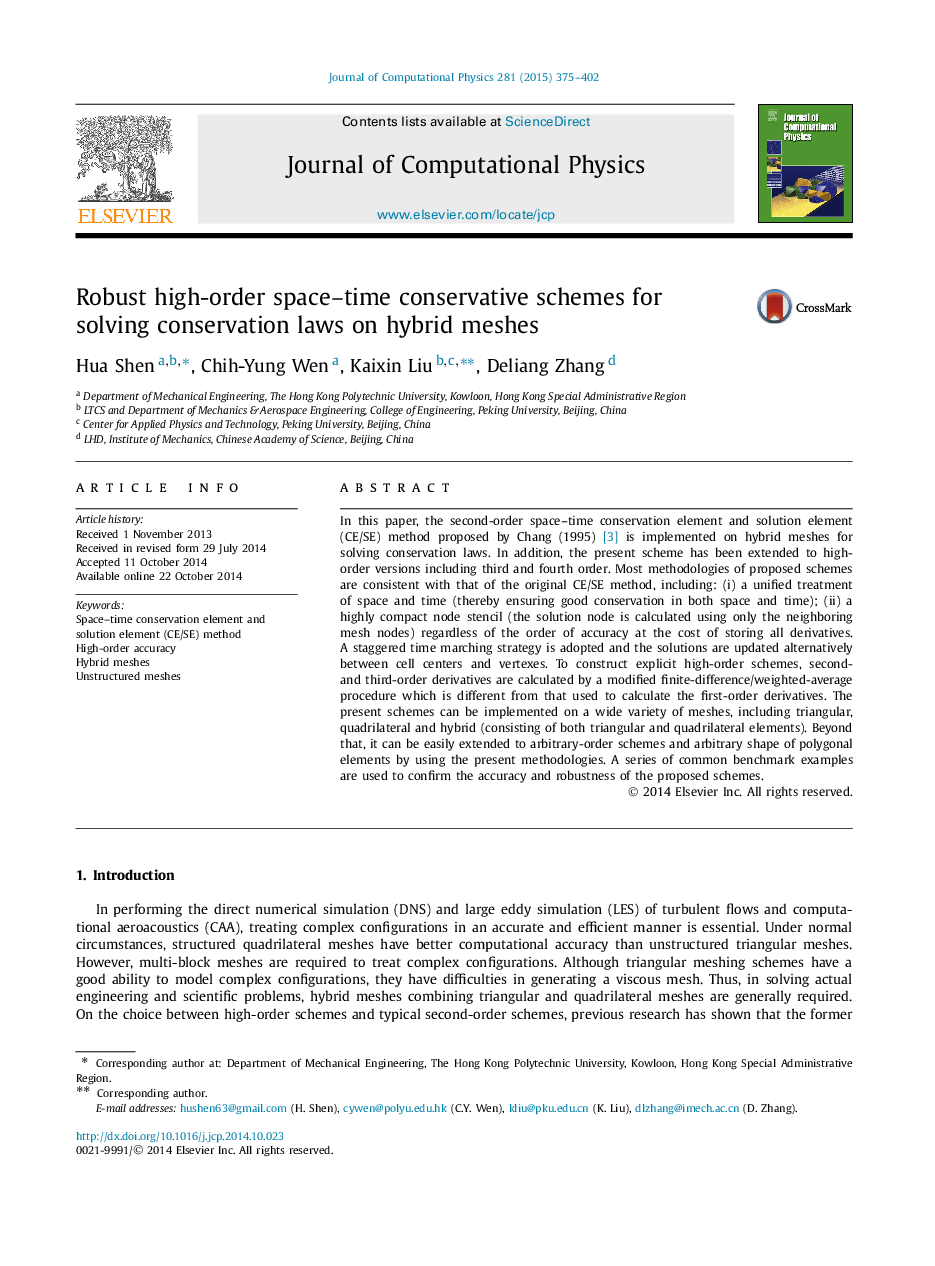| Article ID | Journal | Published Year | Pages | File Type |
|---|---|---|---|---|
| 6932024 | Journal of Computational Physics | 2015 | 28 Pages |
Abstract
In this paper, the second-order space-time conservation element and solution element (CE/SE) method proposed by Chang (1995) [3] is implemented on hybrid meshes for solving conservation laws. In addition, the present scheme has been extended to high-order versions including third and fourth order. Most methodologies of proposed schemes are consistent with that of the original CE/SE method, including: (i) a unified treatment of space and time (thereby ensuring good conservation in both space and time); (ii) a highly compact node stencil (the solution node is calculated using only the neighboring mesh nodes) regardless of the order of accuracy at the cost of storing all derivatives. A staggered time marching strategy is adopted and the solutions are updated alternatively between cell centers and vertexes. To construct explicit high-order schemes, second- and third-order derivatives are calculated by a modified finite-difference/weighted-average procedure which is different from that used to calculate the first-order derivatives. The present schemes can be implemented on a wide variety of meshes, including triangular, quadrilateral and hybrid (consisting of both triangular and quadrilateral elements). Beyond that, it can be easily extended to arbitrary-order schemes and arbitrary shape of polygonal elements by using the present methodologies. A series of common benchmark examples are used to confirm the accuracy and robustness of the proposed schemes.
Related Topics
Physical Sciences and Engineering
Computer Science
Computer Science Applications
Authors
Hua Shen, Chih-Yung Wen, Kaixin Liu, Deliang Zhang,
